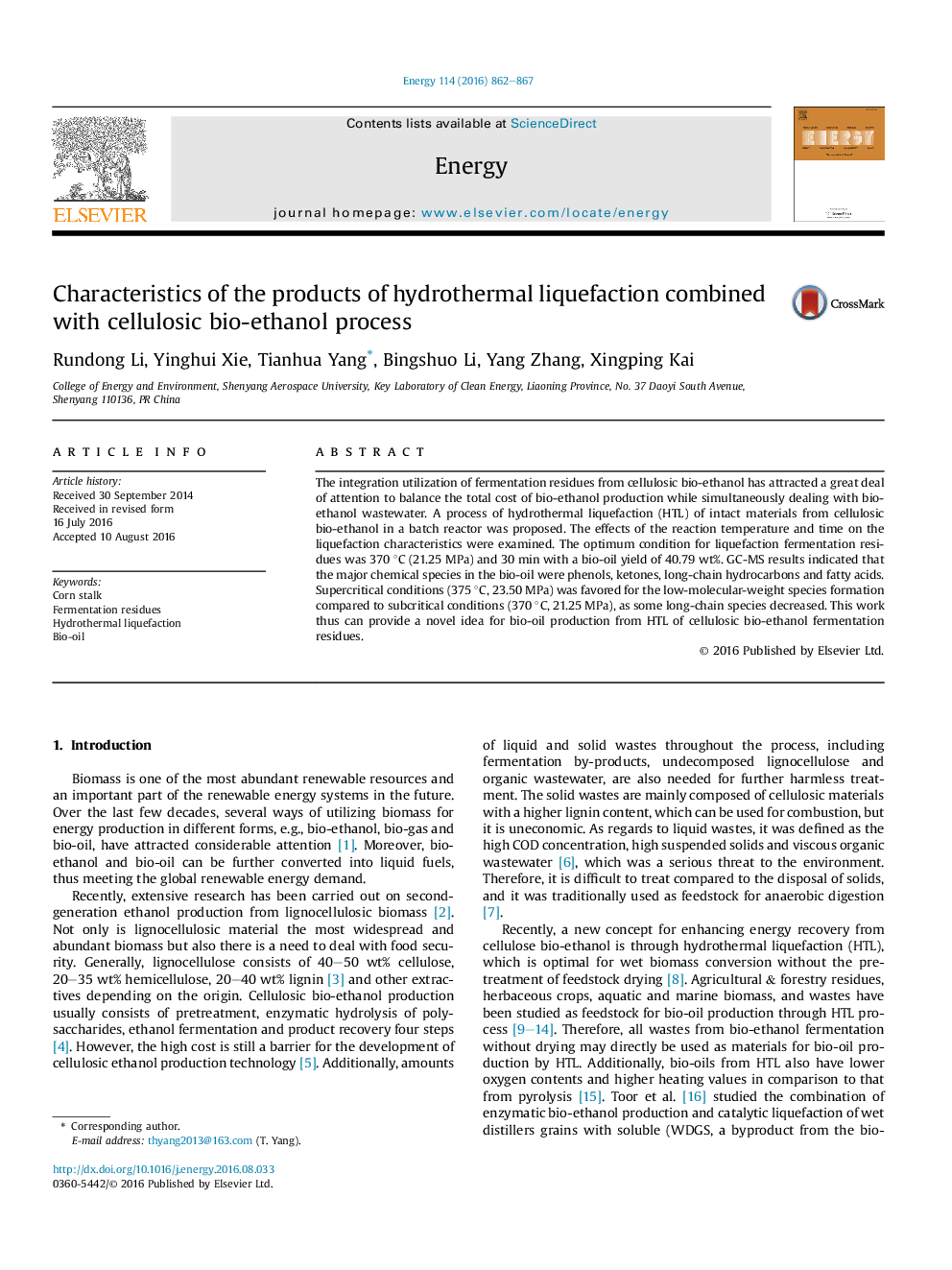| Article ID | Journal | Published Year | Pages | File Type |
|---|---|---|---|---|
| 8072892 | Energy | 2016 | 6 Pages |
Abstract
The integration utilization of fermentation residues from cellulosic bio-ethanol has attracted a great deal of attention to balance the total cost of bio-ethanol production while simultaneously dealing with bio-ethanol wastewater. A process of hydrothermal liquefaction (HTL) of intact materials from cellulosic bio-ethanol in a batch reactor was proposed. The effects of the reaction temperature and time on the liquefaction characteristics were examined. The optimum condition for liquefaction fermentation residues was 370 °C (21.25 MPa) and 30 min with a bio-oil yield of 40.79 wt%. GC-MS results indicated that the major chemical species in the bio-oil were phenols, ketones, long-chain hydrocarbons and fatty acids. Supercritical conditions (375 °C, 23.50 MPa) was favored for the low-molecular-weight species formation compared to subcritical conditions (370 °C, 21.25 MPa), as some long-chain species decreased. This work thus can provide a novel idea for bio-oil production from HTL of cellulosic bio-ethanol fermentation residues.
Related Topics
Physical Sciences and Engineering
Energy
Energy (General)
Authors
Rundong Li, Yinghui Xie, Tianhua Yang, Bingshuo Li, Yang Zhang, Xingping Kai,
